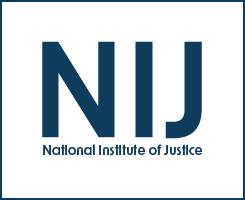Prison overcrowding
Crime File Study Guides, Set 1
Date Published
1991
Agencies
NIJ-Sponsored
Jail Overcrowding and Pretrial Detention - An Evaluation of Program Alternatives
Date Published
1982
Agencies
NIJ-Sponsored
Jail Overcrowding and Pretrial Detention - An Evaluation of Program Alternatives - Executive Summary
Date Published
1982
Agencies
NIJ-Sponsored
Multisite Evaluation of Shock Incarceration
Date Published
1994
Agencies
NIJ-Sponsored
Assessing the Impact of a County Operated Boot Camp: Evaluation of the Los Angeles County Regimented Inmate Diversion Program
Date Published
1993
Agencies
NIJ-Sponsored
Diverting Prisoners to Intensive Probation: Results of an Experiment in Oregon
Date Published
1990
Agencies
NIJ-Sponsored
Drunk Drivers: A Study of Prince George's County (MD) Driving While Intoxicated (DWI) Facility
Date Published
1987
Agencies
NIJ-Sponsored
Evaluation of Objective Prison Classification Systems
Date Published
1986
Agencies
NIJ-Sponsored
Avoiding Overcrowding Through Policy Analysis - The Nevada Experience
Date Published
1986
Agencies
NIJ-Sponsored
Prison and Jail Crowding - Workshop Proceedings
Date Published
1987
Agencies
NIJ-Sponsored
Validation of the Iowa Risk Assessment Scale on a 1982 Release Cohort of Colorado Inmates
Date Published
1988
Agencies
NIJ-Sponsored
Prison Crowding - Crime File Series Study Guide
Date Published
1986
Agencies
NIJ-Sponsored
Dealing Effectively With Crowded Jails - A Manual for Judges
Date Published
1986
Agencies
NIJ-Sponsored
The Great Experiment: California's Prison Realignment and the Legal Reform of Mass Incarceration
Date Published
2016
Agencies
NIJ-Sponsored
Location Tracking Systems for Community Supervision
Date Published
2023
Agencies
NIJ-Sponsored
California: A Decade of Decarceration
15PNIJ-23-GG-01938-RESS
Closed
Funding First Awarded
2023
$32,203
Remarks of James K Stewart Concerning The National Institute of Justice
Date Published
1985
Agencies
NIJ-Sponsored
Day Reporting Center Clients Compared to Standard Probation Clients in Franklin County, PA, Final Report
Date Published
December 2010
Alleviating Jail Crowding - A Systems Perspective
Date Published
1985
Agencies
NIJ
Special National Workshop - State Legislative Strategies for Correctional Reform - Workshop Proceeding - Criminal Justice Research Utilization Program, May 19-20, 1980
Date Published
1981
Agencies
NIJ-Sponsored
Selective Incapacitation?
Date Published
1985
Agencies
NIJ-Sponsored


